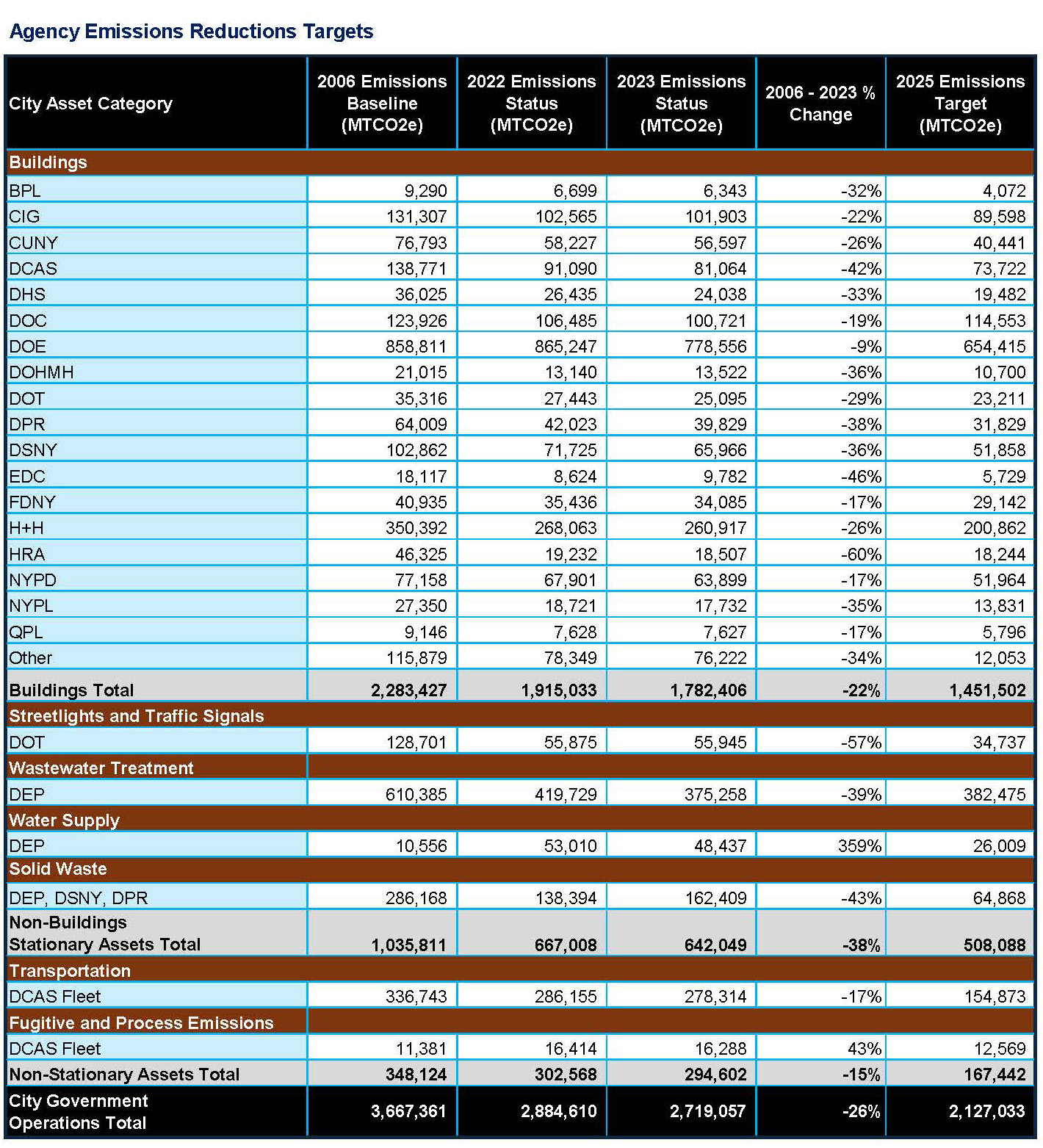
 Department of Citywide Administrative Services311
Department of Citywide Administrative Services311 Search all NYC.gov websites
Search all NYC.gov websites
Executive Order 89 (of 2021) Emissions Reduction Progress
Local Law 97 (LL97), part of the groundbreaking Climate Mobilization Act of 2019, mandates that the City reduce greenhouse gas (GHG) emissions from city government operations 40% by Fiscal Year (FY) 2025 and 50% by FY30, compared to a FY06 baseline.
In December 2021, the Department of Citywide Administrative Services (DCAS) issued the Local Law 97 Implementation Action Plan (LL97 IAP), which set forth a path to LL97 compliance, identified each agency’s FY06 emissions baseline, and in collaboration with city agencies, established agency-specific emissions reduction targets for FY25 and FY30 (LL97 IAP Agency Targets, found in Appendix D of the LL97 IAP). Also in December 2021, Executive Order 89 (EO89) was signed, which requires that the City annually report each agency’s emissions reduction progress, among other mandates.
LL97 IAP Agency Targets were determined in collaboration with agencies by:
- Assessing the technically feasible interventions by building type and applying those interventions to buildings in each agency’s portfolio on a least-cost basis.
- Making certain informed assumptions about the carbon intensity of the grid over time.
- Including projects for non-building assets that had a start date between the beginning of FY20 through the end of FY25. Non-building assets include certain stationary assets like streetlights, wastewater treatment, closed landfills, and non-stationary assets like City vehicles and ships, as examples [1].
Starting in Calendar Year 2022, DCAS has fulfilled the requirements of EO89 by reporting the GHG emissions for the 19 city agencies with LL97 IAP Agency Targets on the DCAS website. The report includes:
- FY06 GHG emission baseline;
- Current fiscal year emission inventory;
- Previously reported fiscal year emission inventories [2]; and
- LL97 IAP Agency Targets.
This report is updated annually to show each agency's continued progress.
FY23 Report
City government operations have reduced GHG emissions by 26% between FY06 and FY23, from 3,667,361 metric tons of carbon dioxide equivalent (MTCO2e) to 2,719,057 MTCO2e. This is the result of significant progress by all city agencies in decarbonizing assets, implementing energy management best practices, and improving the energy efficiency of facilities. For more information about how the City is reducing emissions from government operations, go to DCAS’s Powering Change Report.
As the City advances implementation of interventions and learns more about how we can best reduce GHG emissions from city government operations, LL97 IAP Agency Targets may be rebalanced to reflect opportunities within government operations where there is the most potential to reduce emissions.
Notes
[1] The complete methodology for establishing LL97 IAP Agency Targets is described in Appendix 4 - Section D of the LL97 IAP. Based on the definition of ‘City Building’ under Local Law 97, the City determined that CUNY Senior College should not be included in Executive Order 89 reporting. As a result, the ‘Other Buildings’ category received adjustments across all inventory years.
[2] GHG emissions have been updated for all inventory years to reflect the revised GHG emissions coefficients published by the Mayor’s Office of Climate and Environmental Justice in November 2024. This GHG Inventory methodology is described in the NYC Greenhouse Gas Inventories.



